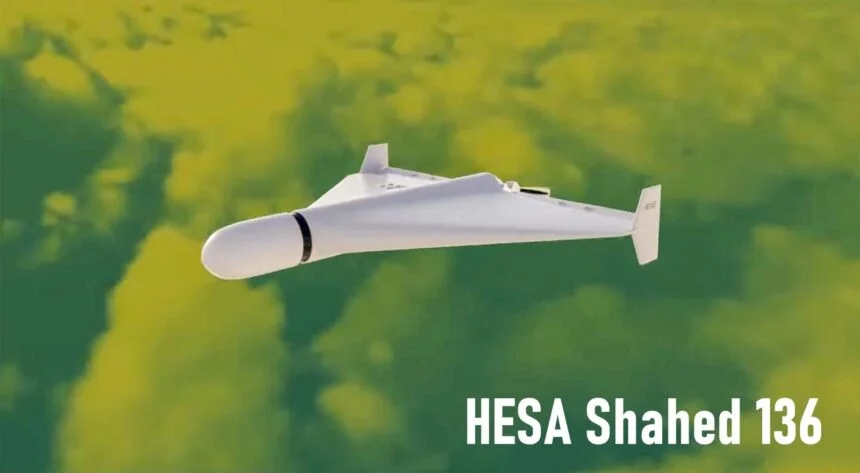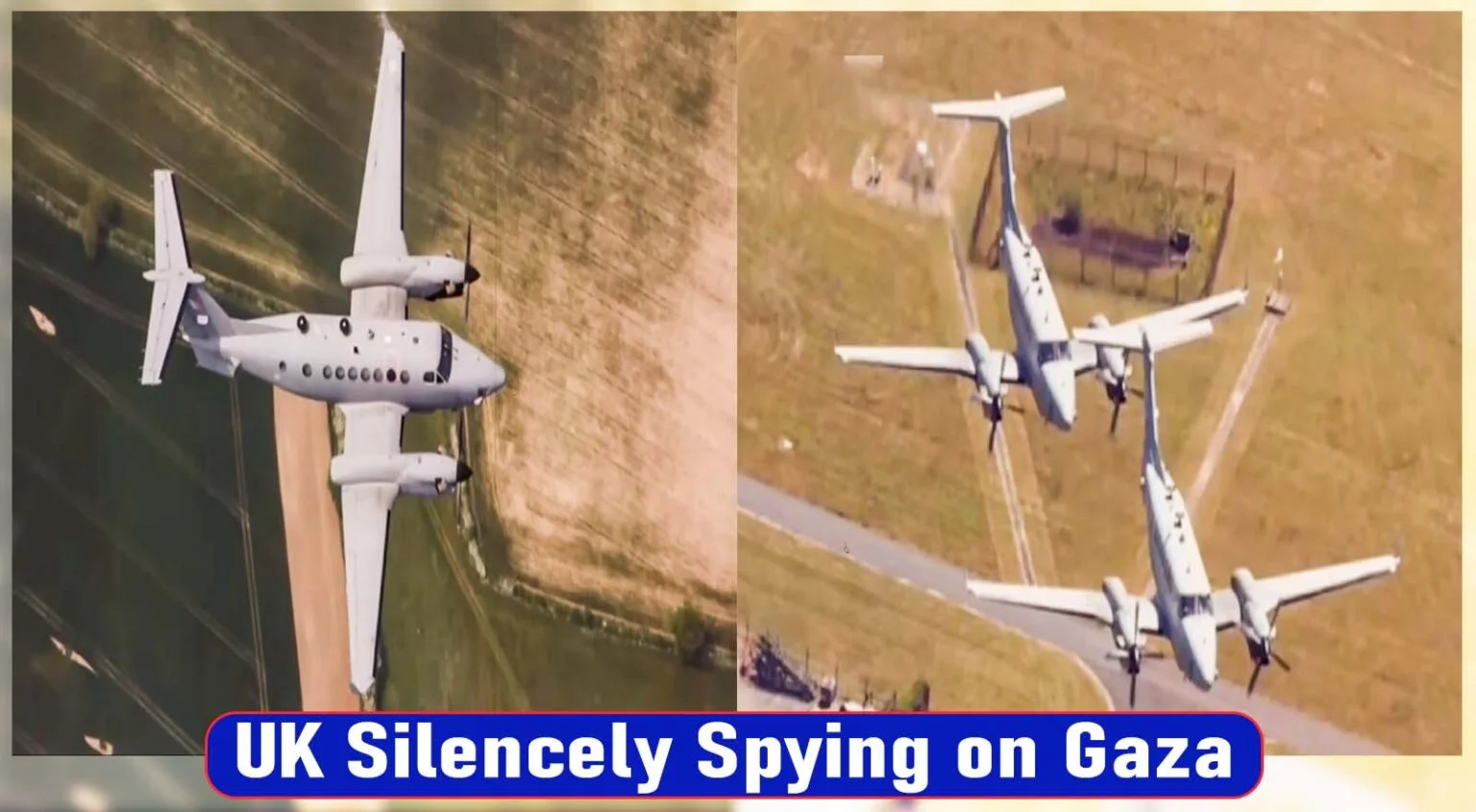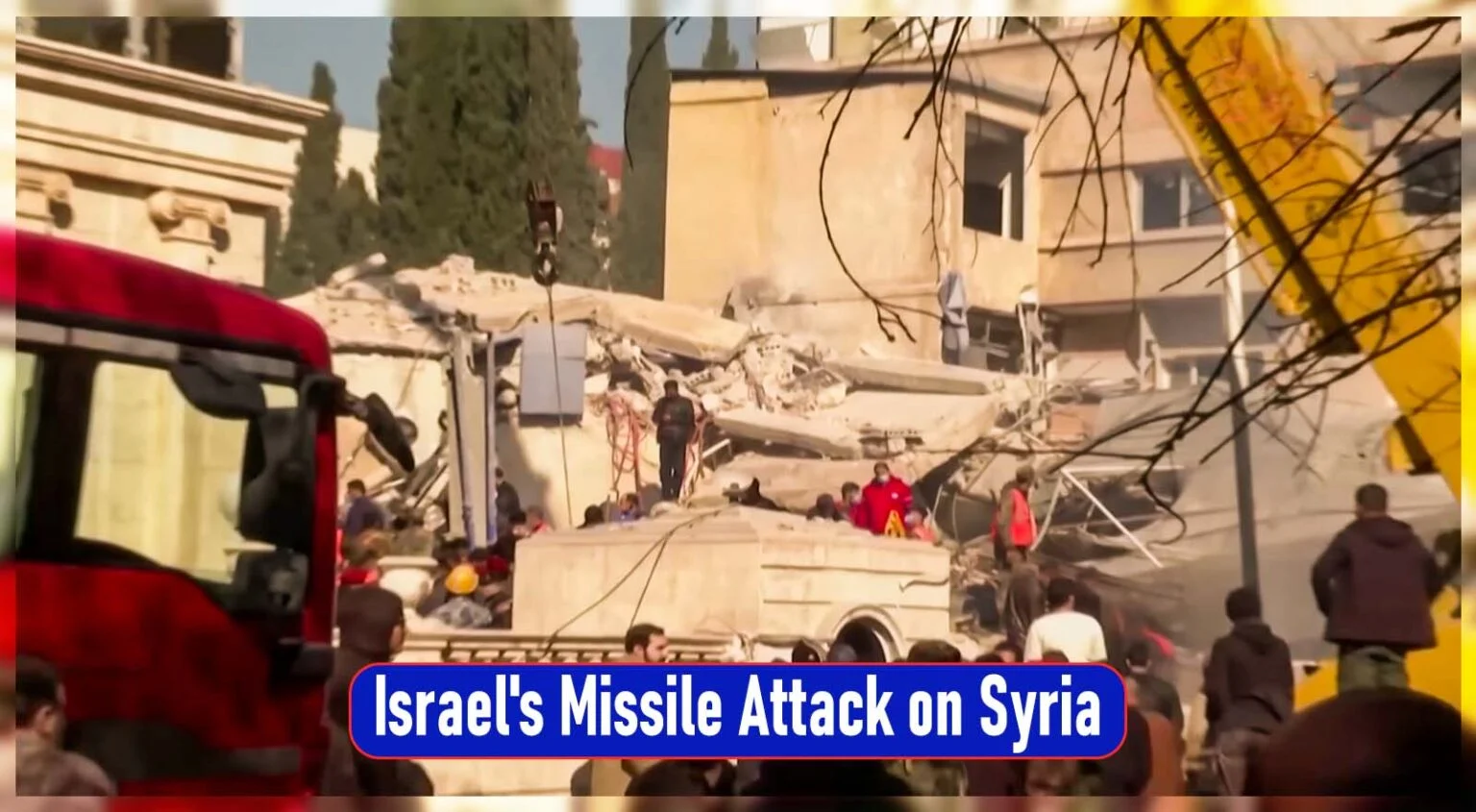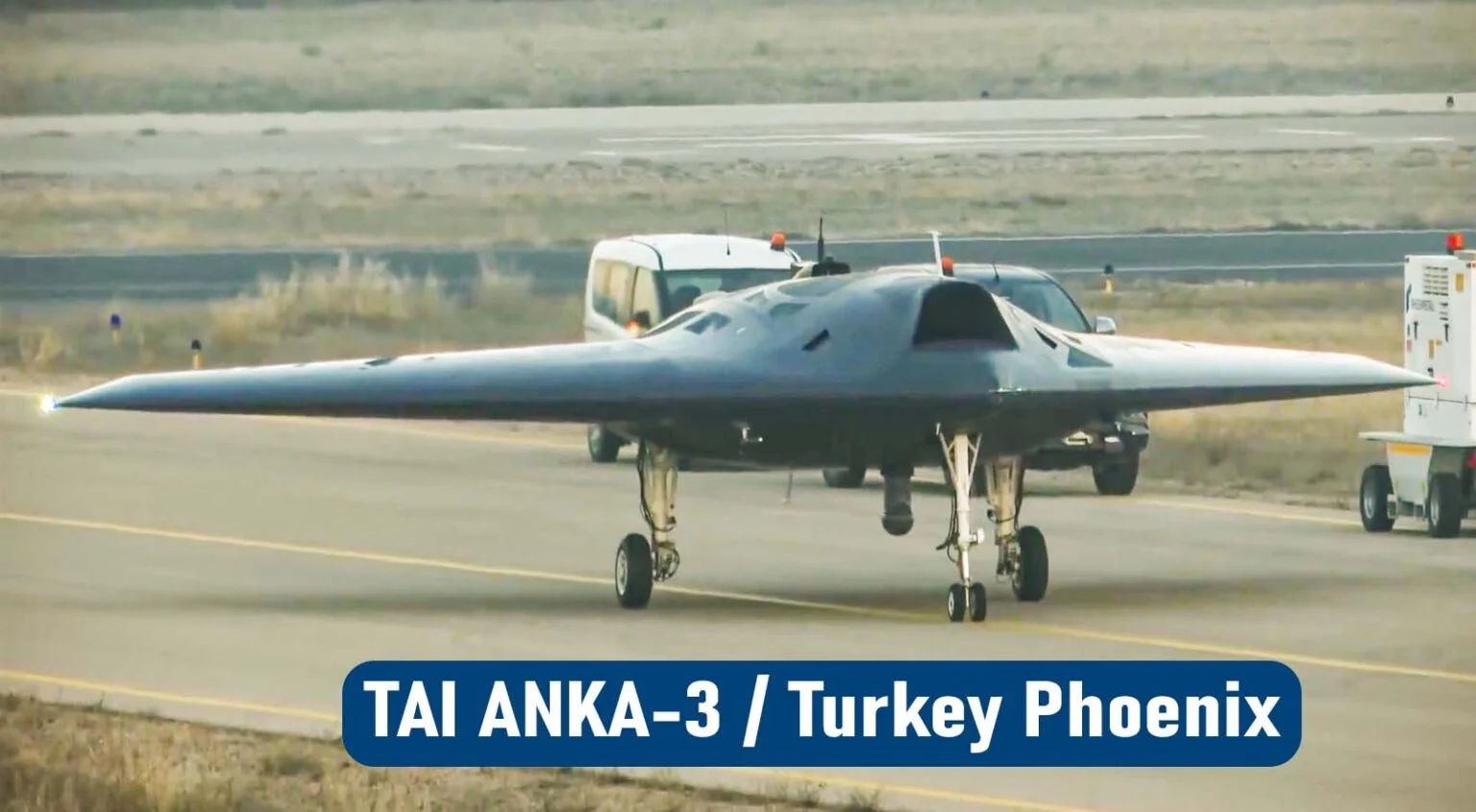The Iranian loitering munition known as the HESA Shahed 136, or Geran-2 in Russian service, is an autonomous pusher-prop drone. HESA collaborates with Shahed Aviation Industries to design and produce it. The weapon is built to launch many rounds from a launch rack at a distance in order to overwhelm air defenses by depleting their resources while attacking ground targets. December 2021 saw the publication of the drone’s first public video.(Shahed 136)
We have compared Turkish drones to. Some of these are Baykar Bayraktar Kızılelma and TAI ANKA UCAV and ANKA-3. You can check out the fighters F-22 Raptor, Sukhoi Su-57, F-35 Lightning II, TF-X KAAN and Chengdu J-20.
Shahed 136 Development
The Shahed 136 is a cropped delta-wing aircraft with a pusher propeller driven by a rear engine with a warhead measuring 3.5 meters in length and 2.5 meters in width. Its maximum speed is 185 km/h and its weight is around 200 kg. The design permits aerial reconnaissance even if there are no cameras in Russian service. In 2023, a modified Shahed 136 was sent to target boats in the Gulf of Oman; this required real-time data communication and a sensor. An Iridium satellite phone SIM card was discovered in the debris, indicating that control could be out of visual range. (Shahed 136)
Shahed 136 Deployment
The whole equipment may be put on the back of any military or commercial truck due to the launch frame and drone assembly’s mobility. Rocket launch assistance (RATO) is used to help the aircraft during its early flight when it is launched at a modest upward inclination. Immediately after launch, the rocket is discarded, and the drone’s standard four-cylinder piston Mado MD-550 engine, manufactured in Iran (maybe a German Limbach L550E that has been reverse-engineered and is also utilized in other Iranian drones like the Ababil-3) takes over. (Shahed 136)
Shahed 136 Electronics, Communications and the Guideline System
According to experts, the munition makes use of LDO chips from Microchip Technology, RF modules from Analog Devices, and an Altera computer processor. The Russian drones that invaded Ukraine in 2022 were equipped with parts manufactured by international businesses, including as the Texas Instruments TMS320 CPU, TI Fluid Systems’ fuel pump built in Poland, and a voltage converter from China. According to the Ukrainian National Agency for Corruption Prevention, parts for the Russian-manufactured Geran-2 came from China, Japan, Switzerland, and the United States. (Shahed 136)
Drone remnants from December 2023 were discovered to include SIM cards and 4G modems, similar to those seen on smartphones.
Shahed 136 Version
Generally Iran makes several types of Shahed drones. Such that like Shahed 131, Shahed 136, Geran-2 and Shahed 238. Pepal has a confusion with Shahed 131 and Shahed 136. Here are some details about every type of drone. (Shahed 136)
Shahed 131:
Its wingtip stabilizers extend up and down, as opposed to only up, as on the smaller Shahed 131, which is the primary visible difference between the two aircraft. The Shahed 136 could possibly have a GPS with some degree of electronic warfare protection, similar to the Shahed 131’s basic INS and GPS. (Shahed 136)
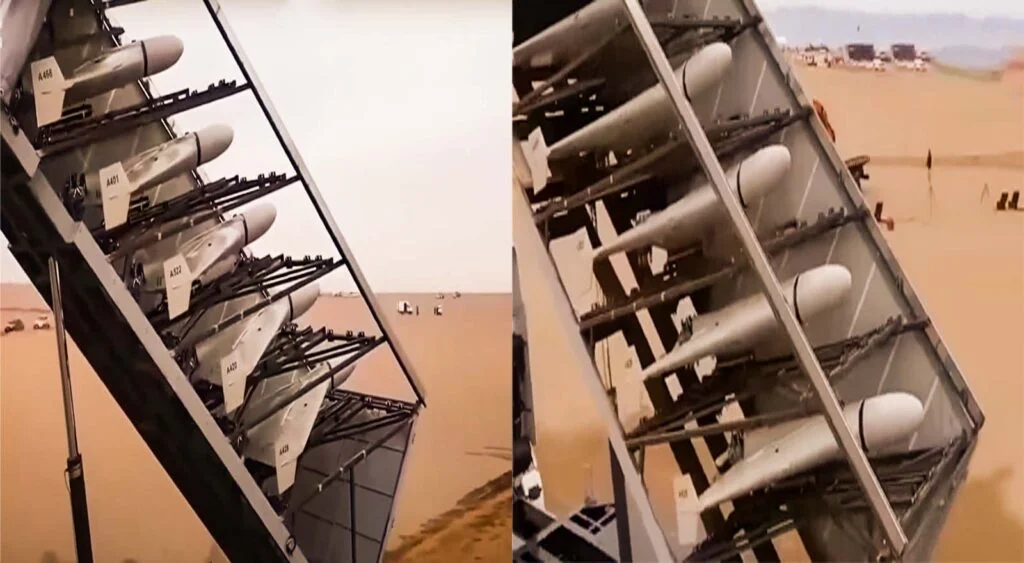
Geran-2:
Russian munition, the Geran-2, is intended to improve loitering performance above the Iranian Shahed 136 standard. The flight control unit and microprocessors are made in Russia, and the Russian GLONASS GNSS system is utilized in place of the civilian GPS system in the United States. There are no cameras or short-range sensors visible, and the weapons’ labels and paint colors match those of Russian munitions. Iran promised to send essential components to Russia so that together they could produce the weaponry by November 2022. By the summer of 2025, the Tatarstan-based Russian factory hopes to produce 6,000 Geran-2 aircraft. (Shahed 136)
Shahed 238:
A program on Iranian state TV unveiled the Shahed 136 drone, which is propelled by a turbojet engine and has a higher speed and altitude than the propeller-driven variant, making it more difficult to intercept. For better navigation, the drone also has a camera installed on its nose. But the jet version is more expensive, more difficult to produce, has a shorter range, and emits more heat than the other type, which leaves it open to attack by infrared-guided missiles. The drone was revealed to the public on November 20, 2023. (Shahed 136)
Russian modifications of Shahed 136
The sluggish, low, and small size of Shahed drones makes it difficult for Ukrainian aircraft to intercept them. The drones are only detectable with 30mm gun and are tough for MiG-29 radar to identify. Pilots must use GPS to establish whether they are over a populated center, making night interceptions considerably more difficult. In order to intercept these drones, Ukrainian pilots routinely make contact with ground-based air defenses.
According to the Ukrainian Air Force, drones are employed to evaluate fortifications before missile assaults. Due to the limited ability of legacy anti-aircraft weaponry to stop these drones, counter-UAS systems such as the Anvil and NiDAR are being acquired. The most economical weaponry for taking down these drones are searchlights and DShK machine rifles. (Shahed 136)
History of operations of Shahed 136
Shahed 136 Use in Russh vs Ukrainian War:
Russia is thought to have employed Geran-2 loitering weapons, which are drones manufactured in Iran, to fight the conflict in Ukraine in 2022. According to Ukrainian and US intelligence sources, Iran provided Russia with several hundred drones, including Shahed-136 models. Iran has refuted these accusations and declared its wartime neutrality. Russia asserts that it uses its own unmanned aerial vehicles (UAVs), which may indicate that they are produced there. It is anticipated that just a few hundred Shahed-136 loitering bombs were deployed in Ukraine. A representative for the White House National Security Council said in May 2023 that over 400 UAVs—mostly Shahed models—were utilized. (Shahed 136)
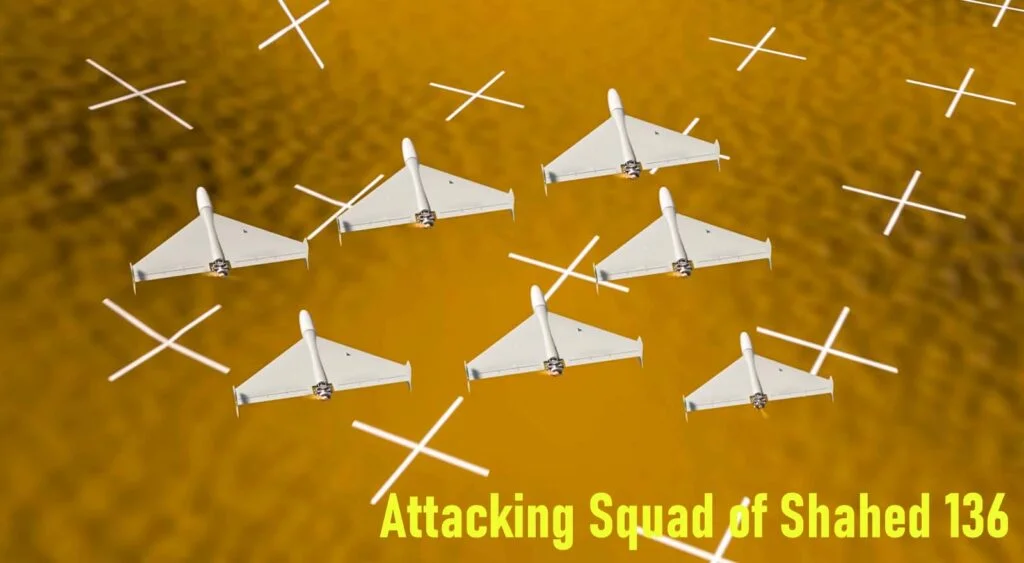
Appearance and Uses in Ukraine of Shahed 136:
The Russian-operated Shahed 136 drones were fired for the first time by Ukrainian artillery on September 13, 2022, during the Kharkiv counteroffensive. Later, the drones were utilized in Odesa, where footage of their destruction of two BTRs and four howitzers was uploaded. The drones were attacked with small arms fire, but did not seem to have shot down any of the planes. Russian troops began using the drones more often on September 25. They used surface-to-air missiles and anti-aircraft rotary gun, downing at least one Geran-2. Although there are rumors that the Ukrainian Navy Headquarters in Odesa was struck, some drones were able to strike unidentified targets. (Shahed 136)
On 5 October 2022, a Geran-2 targeted barracks holding soldiers from the 72nd Mechanized Brigade in Bila Tserkva, and Ukrainian authorities said they sent MiG-29 fighter planes to shoot down the drones with success. But on October 13, 2022, a Ukrainian MiG-29 crashed in Vinnytsia while attempting to take down a Geran-2. According to one account, the drone exploded close to the aircraft and debris hit the cockpit, causing the pilot to evacuate. (Shahed 136)
Shahed 136 in Civil War:
The drone has purportedly been employed by the Houthis in the Yemeni Civil War until 2020. Although The Washington Post reported that other types of drones were used in place of it during the 2019 attack on the Saudi oil sites in Khurais and Abqaiq, there were speculations that it was used. A British report to the UN Security Council states that the weapon used was a Shahed 131, not a 136.
Response about Shahed 136
Diplomatic relations between the two countries were strained as a result of Iran’s early attacks on Ukraine. France, the UK, and France publicly demanded an investigation after the US accused Iran of supplying drones to Russia in violation of UN Security Council Resolution 2231. The resolution’s paragraph 4 in appendix B, which stipulates that it applies to anything that “could contribute to the development of nuclear weapon delivery systems,” was interpreted incorrectly, according to Iran’s UN envoy. (Shahed 136)
The UN ban on conventional Iranian armaments expired in October 2020, however limitations on Iran regarding missiles and associated technology persist until October 2023. 22 nations have asked to buy Iranian drones, which detractors believe are terror tools for people and strategically worthless. An Iranian Major-General made this claim. Iran denied supplying weapons to be used in the conflict in Ukraine, and Hossein Amir-Abdollahian, the country’s foreign minister, declared that Iran would not stand by when Russia employed Iranian drones in that country’s conflict. He blasted Ukraine for missing the negotiations to address proof that Russian drones were being used in Iran. (Shahed 136)
The Shahed 136 drone was allegedly deployed by Iran-allied organizations in August 2022 in Syria, in Iraqi Kurdistan in 2022, and in the Indian Ocean in November 2023, according to U.S. military intelligence. The drone caused damage but did not injure any crew members during its strikes on US-run military outposts, the headquarters of a Kurdish separatist party, and the CMA CGM Symi in the Indian Ocean. (Shahed 136)
Controversy about Shahed 136 Classification
The Shahed 136’s apparent lack of lingering capabilities has cast doubt on its designation as a loitering munition. A British defense and security think tank, the Royal United Services Institute, questioned the Shahed 136’s designation as a loitering munition in January 2023. RUSI observed that the Shahed 136 had not been lingering around a target region before striking a target, but had instead been utilized mostly for point-to-point suicide missions akin to cruise missiles. (Shahed 136)
RUSI did, however, also make the suggestion that the Shahed 136, even though it lacked the loitering munition capacity, may have been employed in the assaults on MT Mercer Street and Pacific Zircon. The debris of the drones employed in the assaults did not yield any sensors or a piece of laser-seeking technology found on conventional loitering bombs, according to a study by the Oil Companies International Marine Forum that evaluated the Shahed 136 attacks on those ships. Based on visual evidence, the article did mention that the drone that hit the Pacific Zircon had a GNSS antenna. (Shahed 136)
We have compared Turkish drones to. Some of these are Baykar Bayraktar Kızılelma and TAI ANKA UCAV and ANKA-3. You can check out the fighters F-22 Raptor, Sukhoi Su-57, F-35 Lightning II, TF-X KAAN and Chengdu J-20.
You can go to Iran’s official website and learn about their drone. To visit the website click here.
FAQ
Which country is operating Shahed 136?
At this current time only three countries are operating the Shahed 136. These are Iran, Houthis and Russia.
What has been done by Shahed 136 in 2022 in Syria?
The Syrian opposition-held land in the Syrian Desert is where the U.S. military claims terrorists associated with Iran utilized the Shahed 136 in August 2022 against an American-run military installation at Al-Tanf.
What has been done by Shahed 136 in 2022 Iraqi, Kurdistan?
The IRGC Ground Forces attacked the Kurdish separatist group’s headquarters in the Kurdistan area of Iraq in 2022 using the Shahed 136 drone.
What has been done by Shahed 136 in 2023 in the Indian Ocean?
A US defense official stated that on November 24, it was likely that an Iranian Shahed 136 targeted the CMA CGM Symi in the Indian Ocean. The attack damaged the ship, but none of the crew were hurt.
What controversy has arisen about Shahed 136 on its classification?
Shahed 136’s categorization as a loitering munition was called into doubt by the Royal United Services Institute since it was not capable of lingering, however it could have been employed in the Pacific Zircon and MT Mercer Street assaults.

